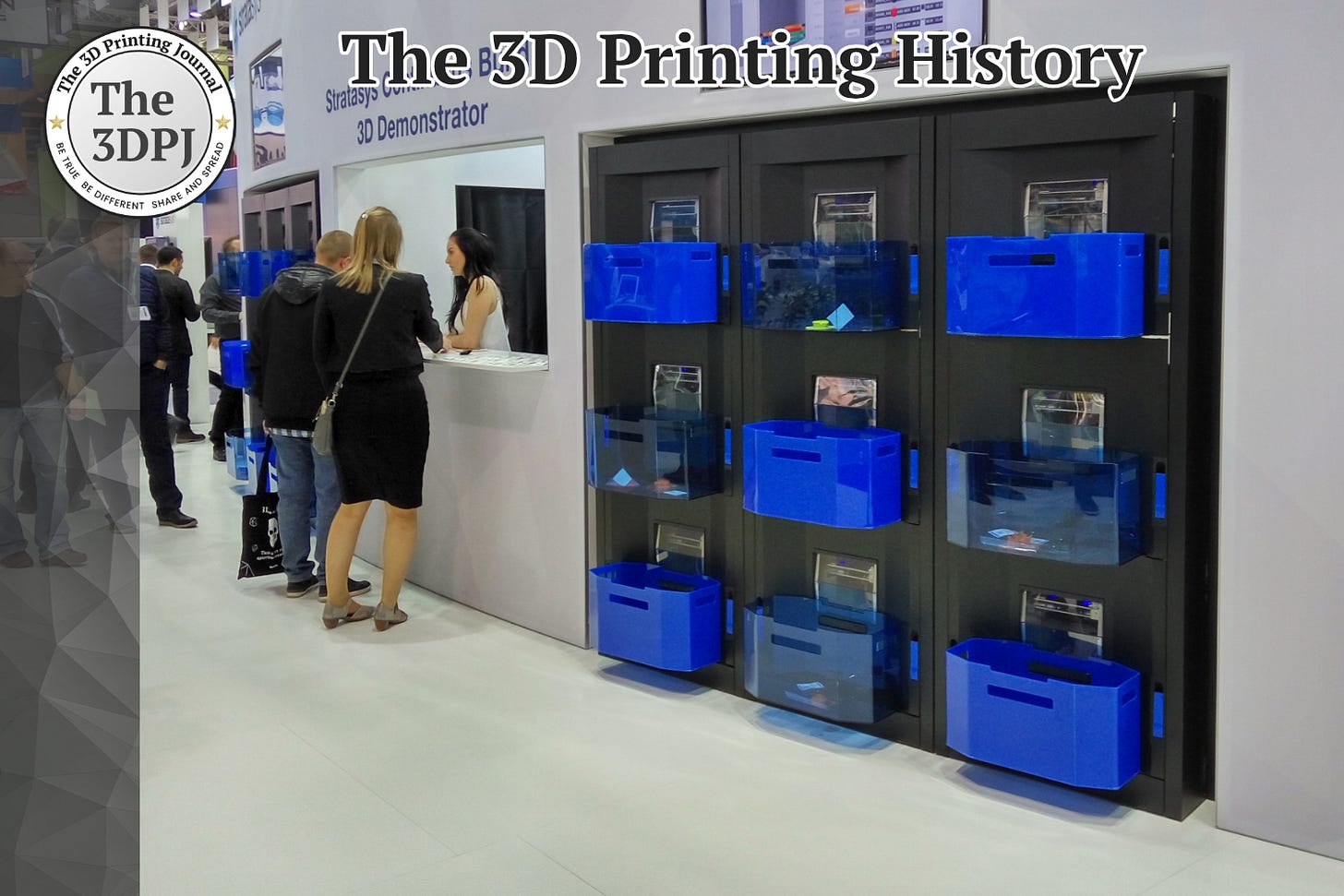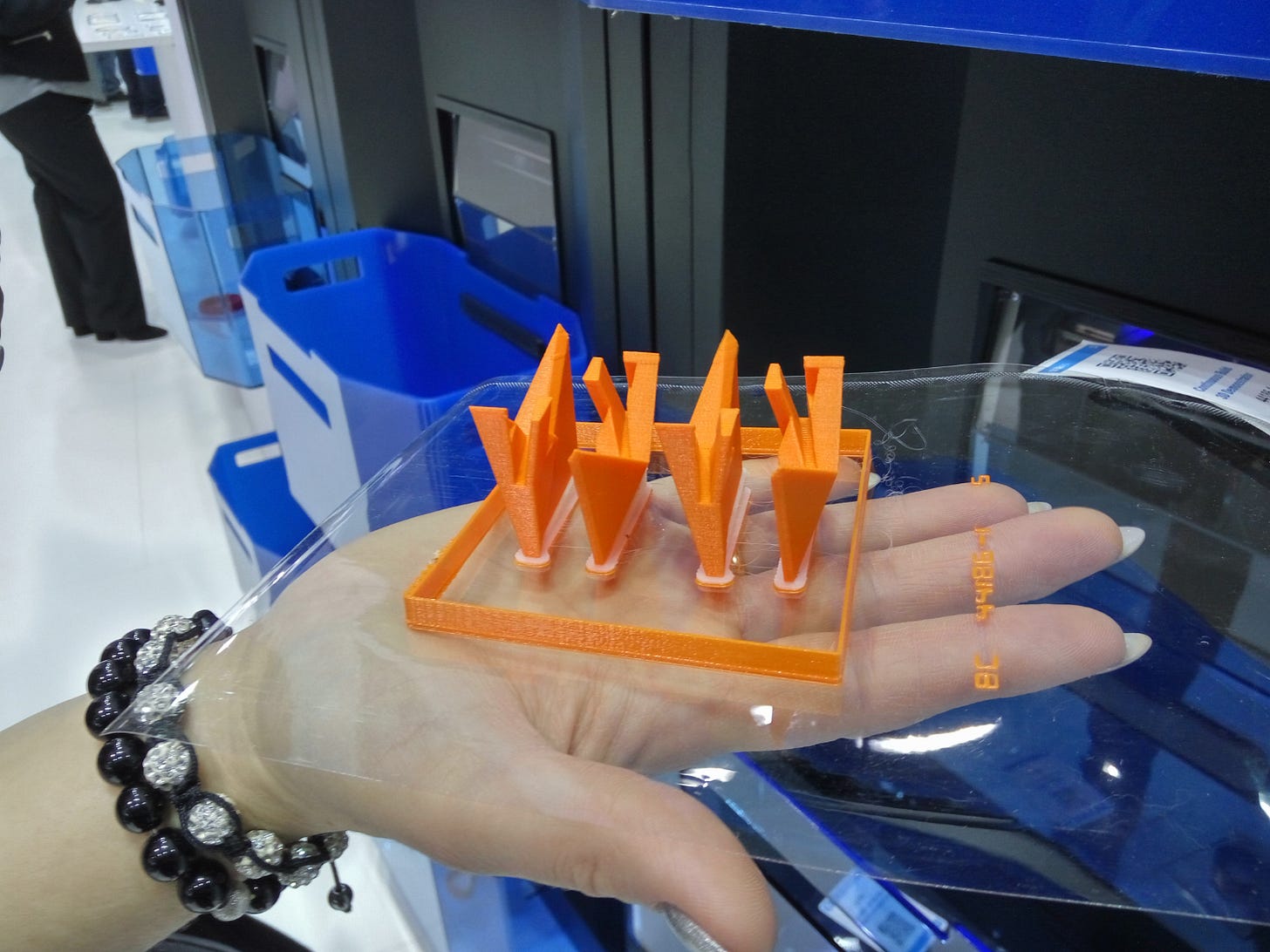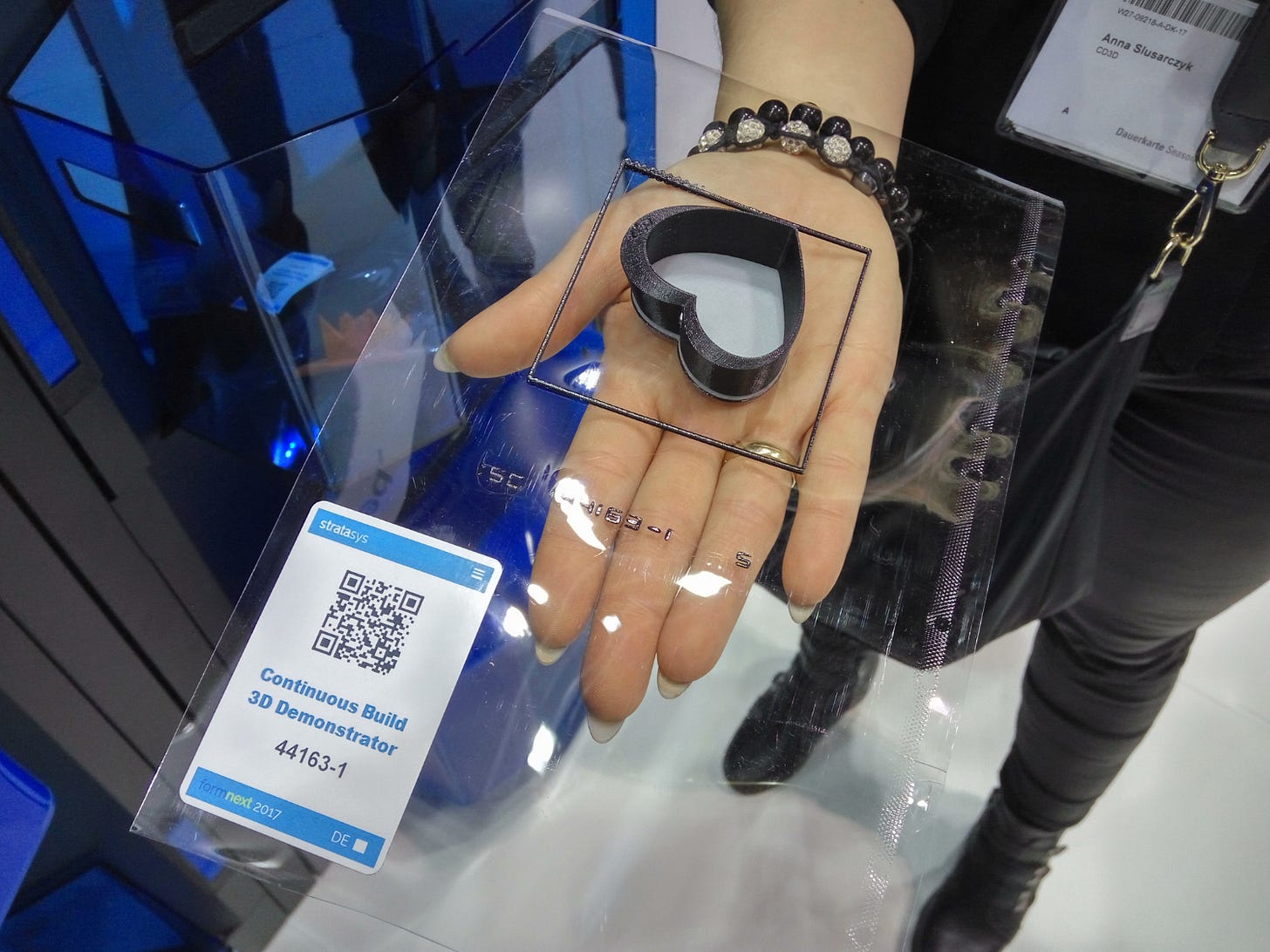05-09-2025: Stratasys unveiled the Multi-Cell Additive Manufacturing Platform
A system for serial production based on Mojo 3D printers
On May 9, 2017, Stratasys presented an innovative production platform under the working name "Multi-Cell Additive Manufacturing Platform." The presentation took place at the RAPID + TCT Show in Pittsburgh and showcased a system designed for continuous low-volume production and mass customization.
The platform was developed as a scalable solution composed of multiple print cells, each based on the design of the Mojo printer – a compact FDM device previously offered by Stratasys (and discussed in yesterday’s article). Each cell could operate independently, printing a different job, which allowed the system to handle varied production tasks within a single platform.
The entire system was centrally managed through a cloud-based architecture that handled automatic job queueing, load balancing, and fault recovery – if one print cell failed, the job would be automatically rerouted to another available unit.
One of the platform’s most distinctive features was its automation – the system could operate with minimal human intervention, automatically starting new jobs after completing previous ones and ejecting finished parts. This operational model was especially suited to educational environments and organizations that could benefit from tool-free manufacturing and a “zero inventory” supply model.
A particularly interesting feature was the use of a film on which parts were printed; once the print was complete, the film would be advanced and cut off. Each film segment had its own label and identifier, aiding in part tracking and identification.
Later that year, in the fall of 2017, the platform was showcased again at Formnext in Frankfurt, Germany (the photos of the system originate from that event).
Unfortunately, despite the interest and positive reception of the concept, the system never entered commercial production. One of the reasons for the lack of further development was the limited economic scalability of the chosen solution. The print cells, based on the by-then somewhat outdated Mojo design, were relatively expensive to manufacture and operate.
As a result, Stratasys ultimately abandoned the idea of basing continuous production on multiple miniaturized FDM units and shifted its focus toward more advanced industrial printing systems, such as Fortus and the SAF technology, which became part of the Stratasys H Series platform.
Source: www.stratasys.com







